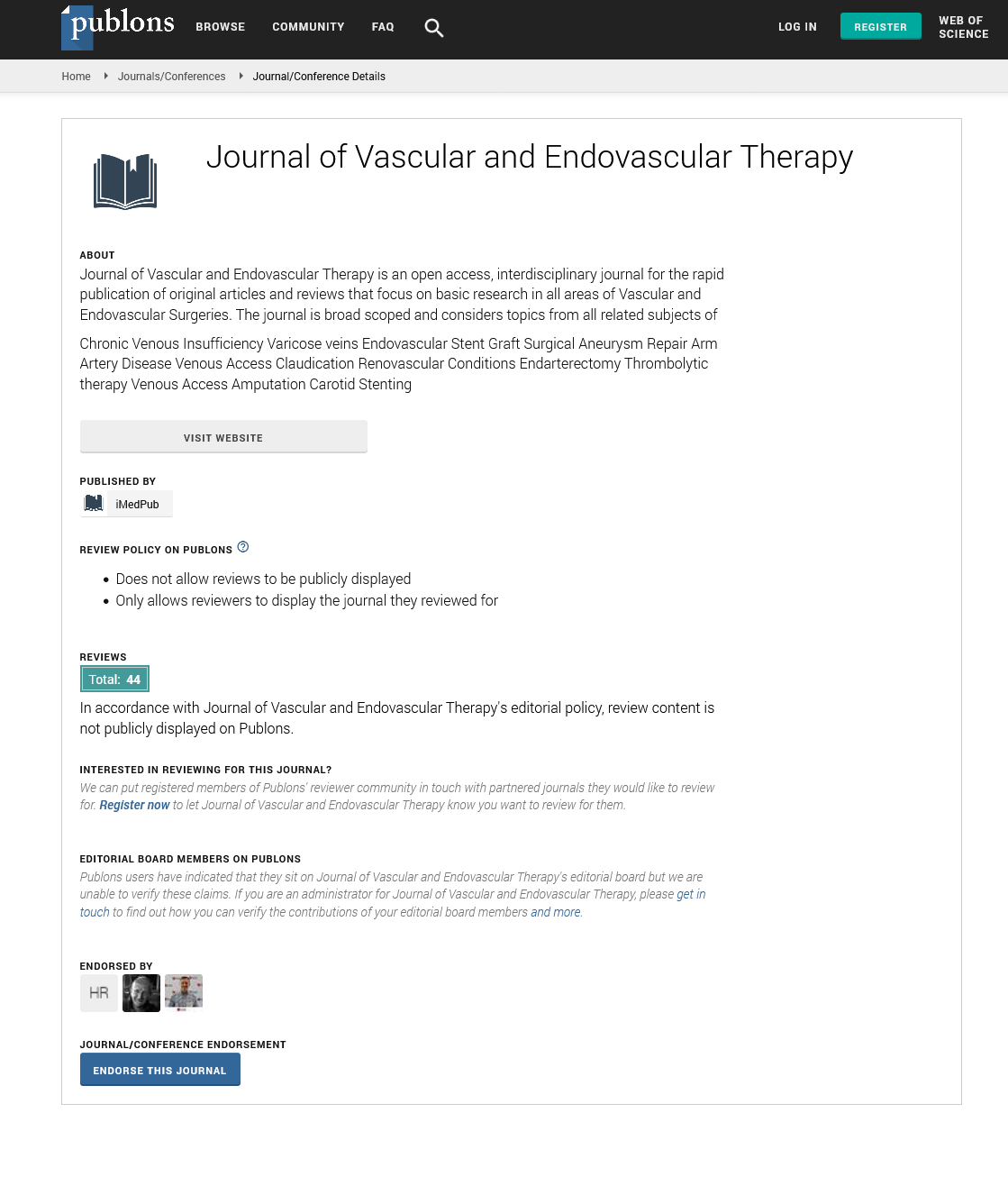ISSN : 2634-7156
Journal of Vascular and Endovascular Therapy
The impact of Arteriovenous fistula anastomosis angle and diameter on steal syndrome: Ultrasound assessment: Pilot study
7th Edition of World Congress & Exhibition on VASCULAR SURGERY
November 29-30, 2021 Webinar
Fadi Marzouq Alrehaili and Mohammed F.Aslam
Imperial college London, UK
ScientificTracks Abstracts: J Vasc Endovasc Surg
Abstract
Distal hypoperfusion ischemic syndrome, commonly known as steal syndrome, is a common problem of arteriovenous-access patients. It causes hypoxia, distal hypoperfusion, tissue necrosis, gradual tissue loss. The common cause of this phenomenon includes proximal or distal stenotic lesion, diabetes and lack of collaterals. However, there are insufficient studies about the anastomotic angle or diameter and how it influences steal syndrome. Therefore, we believe that the anastomotic angle and diameter may have a correlation with steal syndrome in the end-stage-renal-failure patients. Method: A pilot retrospective study was conducted involving two groups: one with 29 patients with steal syndrome symptoms, second with 61 patients with arteriovenous fistula but without steal syndrome symptoms (control group). The patients’ data were collected from the vascular laboratory of Hammersmith Hospital. Several parameters were assessed: the anastomotic angle, diameter and volume flow and the diameter and volume flow of the artery that was used for the creation of the fistula. The patients’ clinical history and demographic data were recorded for analysis purposes, and then the positive and negative steal anastomotic volume flow ratios were analysed and compared. Results: The results showed that there was no significant association between the anastomotic angle and steal syndrome development when the angle was ≥ 45° (p > 0.05). The 45–90° angle range showed the lowest percentage of associated steal syndrome among all the angles. In terms of risk factors, our results showed that hypercholesteremia and family history of cardiovascular disease were the major risk factors associated with steal syndrome development. Moreover, our results suggest that age and gender have an impact on steal syndrome development as it was associated with > 60% of those in the above-60 age group and especially with the female gender. The anastomotic diameter and ratio were shown to be significantly higher in the patients with steal syndrome than in those without steal syndrome (p < 0.005). Furthermore, the patients with steal syndrome had a significantly higher volume flow and volume flow ratio than the control group (p < 0.005). Conclusion: This study suggests that patients with an anastomotic diameter of > 3 mm or an anastomotic ratio of ≤ 1.7 have a greater chance of developing steal syndrome than those with an anastomotic diameter of < 3 mm or an anastomotic ratio of ≥ 1.8 . In addition, patients with a volume flow in the outflow vein exceeding 800 ml/min or with a volume flow ratio of ≥ 0.95 are more prone to develop steal syndrome than patients with a volume flow rate of < 700 ml/min in the outflow vein or a volume flow ratio of ≤ 0.7. Our results showed a 45–90° anastomotic angle range, which is considered preferable as it showed the lowest percentage of associated steal syndrome among all the angles. Keywords: Anastomosis angle, Anastomosis diameter, chronic kidney disease, Steal syndrome.
Biography
Fadi Alrehaili grew up in Saudi Arabia and received his bachelor degree in radiology science from Taibah University. He was awarded MSc in vascular ultrasound from imperial college London, UK in 2021.
Google Scholar citation report
Citations : 177
Journal of Vascular and Endovascular Therapy received 177 citations as per Google Scholar report
Journal of Vascular and Endovascular Therapy peer review process verified at publons
Abstracted/Indexed in
- Google Scholar
- Open J Gate
- Publons
- Geneva Foundation for Medical Education and Research
- Secret Search Engine Labs
Open Access Journals
- Aquaculture & Veterinary Science
- Chemistry & Chemical Sciences
- Clinical Sciences
- Engineering
- General Science
- Genetics & Molecular Biology
- Health Care & Nursing
- Immunology & Microbiology
- Materials Science
- Mathematics & Physics
- Medical Sciences
- Neurology & Psychiatry
- Oncology & Cancer Science
- Pharmaceutical Sciences
